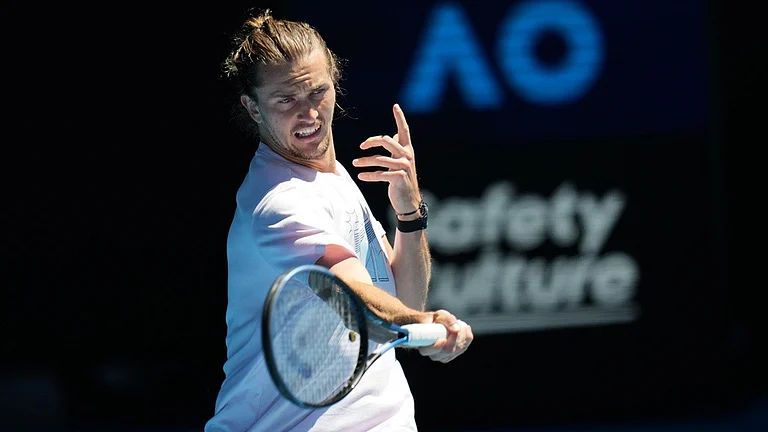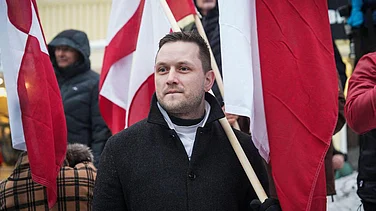Nepal will hold elections for the federal government and seven provincial governments on Sunday.
The Nepal elections are unique as both first-past-the-post (FPTP) and proportional representation (PR) systems are followed simultaneously.
Political instability has plagued Nepal for several years and no single party is expected to secure parliamentary majority in Sunday's election as well. However, it is expected that Prime Minister Sher Bahadur Deuba's Nepali Congress-led federal government will retain power but that's unexpected to be enough to solve the instability.
Here we explain where do different leading parties stand, how is Nepali polity structured, and what drives Nepal's political instability.
Nepal elections 2022 fast facts
More than 17.9 million people are eligible to vote in seven provinces across Nepal.
The polling will start at 7 am local time on Sunday and close at 5 pm.
Out of a total of 275 members of the federal Parliament, 165 will be elected through direct voting (FPTP) and the remaining 110 will be elected through a PR system. Similarly, out of a total of 550 members of the provincial legislatures, 330 will be elected directly and 220 will be elected through the proportional method.
Over 22,000 polling centres have been set up for the November 20 elections in which 5,907 candidates are in the fray.
The Election Commission of Nepal has mobilised 276,000 staff for conducting the election in all 77 districts. Some 300,000 security personnel have been deployed to facilitate peaceful polling.
On Friday, Nepal Army chief Gen. Prabhu Ram Sharma held a meeting with Chief Election Commissioner Dinesh Kumar Thapaliya on security matters related to the elections.
Security has been stepped up in all 77 districts across the country with air-patrolling around polling stations and closing of international borders for 72 hours.
Nepal's political instability
Political observers closely watching the Nepal elections have predicted a hung parliament and a government that is unlikely to provide the required political stability in Nepal.
Political instability has been a recurrent feature of Nepal's Parliament since the end of the decade-long Maoist insurgency, and no prime minister has served a full term after the civil war ended in 2006. Since the abolition of monarchy in 2008, Nepal has had 10 federal governments.
The frequent changes and fighting among parties have been blamed for a slow economy. Previously, the political parties and Communists waging the civil war blamed the monarchies for Nepal's developmental woes but, since the end of monarchy, they have not been able to bring stability as well.
From foes to friends: Nepal's unlikley coalitons
There are two major political alliances fighting it out for the November 20 general elections — the Nepali Congress (NC)-led democratic and leftist alliance and the CPN-UML-led leftist and pro-Hindu-pro-monarchy alliance.
The NC-led ruling alliance includes CPN-Maoist Centre, CPN-Unified Socialist, and Madhes-based Loktantrik Samajwadi Party, and the CPN-UML-led alliance includes pro-Hindu Rastriya Prajatantra Party and Madhes-based Janata Samajwadi Party.
The NC and the CPN-Maoist Centre of Prachanda were bitter rivals during the civil war as Prachanda was the leader of Communists. The Indian Express reports that a large number of 17,000 people killed during the civil war were NC cadres and current NC PM Deuba also survived a Communist ambush earlier. But now he is allied with his formal enemies. On the other hand, the Left is allied with monarchist parties which goes against conventional wisdom.
The next government will face challenges of keeping a stable political administration, reviving the tourism industry and balancing ties with neighbours China and India.
Where do parties stand in Nepal polls?
Among the major political parties, CPN-UML has fielded 141 candidates while the Nepali Congress and CPN-Maoist Centre have fielded 91 and 46 candidates respectively.
The Nepali Congress led by Deuba has in its election manifesto promised to maintain good governance, accountability, transparency, and financial discipline if it wins the election. The party has also assured to generate 1.25 million jobs for the youths in the next five years and provide skill development training and career-oriented education to generate more employment opportunities and to encourage people to self-employment.
The party aims to resolve border issues through dialogue and diplomatic efforts while giving high priority to neighbours in foreign policy. The coalition government is needed for another five years for maintaining political stability, argues the party.
Nobody will die of hunger and job and earnings will be ensured for all, if our party wins the election, claims the CPN-UML, led by former premier KP Sharma Oli, in its manifesto. The party aims to give priority to domestic products and encourage "make in Nepal."
While pursuing free and balanced international relations, the party aims to develop friendly relations with the international community by giving priority to relations with neighbours. It also promises to get back the three territories of Kalapani, Lipulekh and Limpiyadhura from India if it comes to power.
The CNP (Maoist Centre) gives top priority to good governance, transparency, checking corruption and digitising government offices in its manifesto.
"We will maintain cordial friendly and close relations with both the neighbours (China and India) keeping in view the geopolitical situation and will not take part in any type of multilateral or bilateral military groupings," says the party.
Sustainable economic growth, quality education and health, and poverty minimisation are the major agenda for pro-Hindu and pro-monarchy Rastriya Prajatantra Party.
Under its political agenda, the party campaigns for a directly elected executive Prime Minister, reinstating ceremonial monarchy and revival of the Hindu state along with religious freedom.
"We accept friendship with all but never accept any type of foreign interference," says the party in its manifesto.
Nepal economic woes
Lack of jobs push up to 5,00,000 Nepali youth to work in the Gulf region every year where hundreds die every year, according to data cited by the Express.
Further, a large number of youth leave Nepal every year to study and work elsewhere in the world and the country has become highly dependent on remittance and tourism, which was affected drastically by the Covid-19 pandemic.
"Personal remittances received were less than 1 percent of GDP up until the late 1990s, lower than Bangladesh and India. This share dramatically increased during the first half of the 2000s, rising from 2 percent in 2000 to 22 percent in 2010 and 30 percent in 2015. Following the pandemic, it was anticipated that Nepal would experience a sharp fall in remittance inflows, impacting imports, the balance of payments, foreign exchange reserves, consumption, savings, loans and interest rates," says an article in The Kathmandu Post, adding that remittances are likely the main drivers of Nepal's growth.
(With PTI inputs)


























